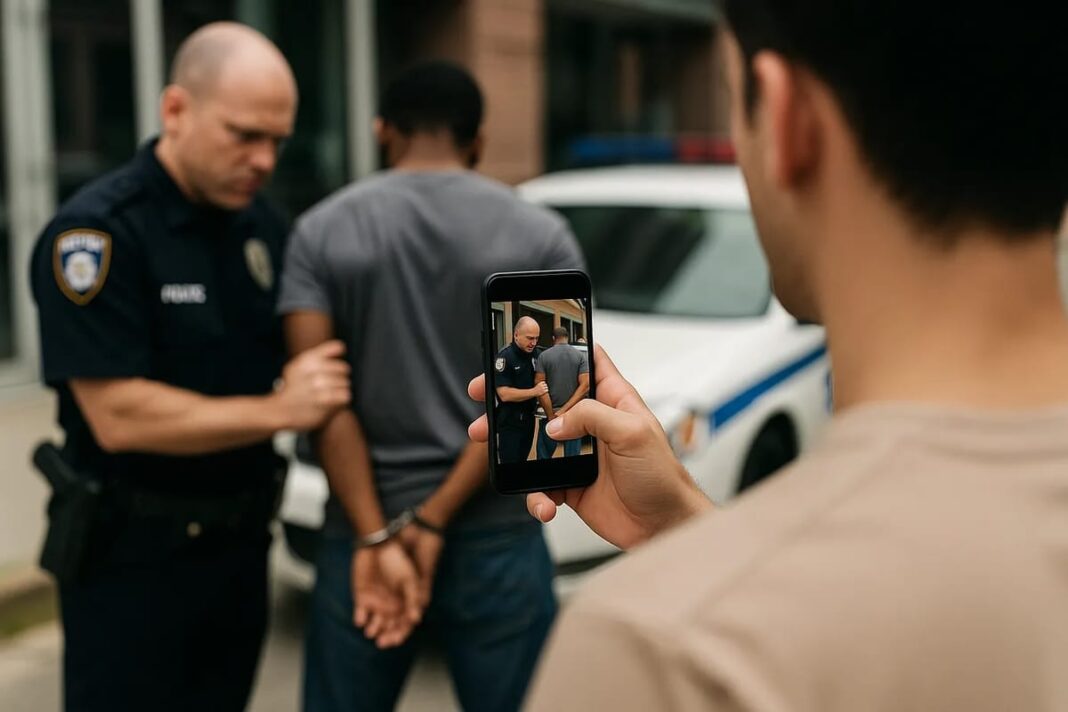How Cell Phone Cameras Changed the Narrative
The Yearning for a ‘Great’ Past
In discussions about a nostalgic America, many people express a desire to return to a bygone era. Yet, when pressed to define that time, the answers can be revealing. Was it the 1930s and 40s, a period marred by global conflict and rampant injustice? Or perhaps a time when marginalized voices were silenced, and systemic oppression was the norm? The desire to return often glosses over the harsh realities of various historical epochs, a tendency that deserves scrutiny.
The Impact of Technology on Perception
Enter the modern-day cell phone camera, a device that has revolutionized how we perceive and document reality. With a camera in nearly every pocket, the ability to capture the truth in real time has altered our understanding of social justice and injustice. Gone are the days when stories depended solely on verbal accounts. Now, videos can provide undeniable evidence of events as they unfold.
Capturing Injustice
The introduction of video technology has made it harder for society to ignore the realities of racism and brutality. The case of Rodney King marked a significant moment, representing one of the first instances where police brutality was captured and broadcast to the nation. However, the proliferation of smartphone cameras has expanded this phenomenon to a daily occurrence.
In recent years, there have been harrowing examples of violence against Black individuals documented on video. A Highlands Ranch, Colorado officer firing eight rounds into a Black man caught on camera; a police officer in Aurora, Colorado shooting an unarmed motorist, all preserved for public scrutiny. These incidents have exposed systemic injustices in a way that cannot be dismissed.
The Power of Visual Evidence
The video recording of Derek Chauvin pressing his knee into George Floyd’s neck served as a catalyst for global protests and social movements. The visual medium became a powerful tool for advocacy, arousing empathy and outrage in ways that mere words could not. The public response showcased the influence of technology in igniting substantial societal change.
Similarly, the case of Ahmaud Arbery, run down by two men in Georgia, illustrates how cell phone footage can change narratives dramatically. The video recorded by a neighbor became irrefutable evidence, shedding light on an egregious crime that might have otherwise been downplayed or dismissed.
Unmasking Everyday Racism
Beyond extreme incidents of violence, cell phone cameras have also helped expose less overt yet damaging forms of racism. Take, for example, the incident at Starbucks in Philadelphia, where two Black men were arrested for sitting in a coffee shop without making a purchase. Video footage sparked nationwide outrage, compelling the company to implement bias training across all locations.
In another viral incident, a white woman in Central Park called 911 and falsely accused Black birdwatcher Christian Cooper of threatening her. The video’s wide distribution not only led to public condemnation but also demonstrated the power dynamics at play in everyday interactions.
Accountability in the Digital Age
The reality is that these incidents have been happening for a long time, but cell phone cameras have changed the landscape of accountability. Racists and perpetrators of injustice can no longer hide under a veil of denial. The videos document the truth and provide “I told you so” proof for those who have long felt their stories were unheard.
When Los Angeles Clippers owner Donald Sterling was recorded making racist comments, his empire crumbled as the public reacted. Similarly, the 2022 incident where LA City Council members were caught making deeply racist remarks proves that accountability is increasingly demanded, thanks to modern technology.
The Shift in Societal Attitudes
The shift in perception brought by cell phone cameras signals a broader cultural change. Rather than making society worse, these devices expose long-standing issues that were often ignored or minimized. What many may be challenging is not the worsening of societal norms, but the fact that racists are now getting caught. Their excuses and denials no longer hold the weight they once did.
Bridging the Divide
In a world where video evidence can no longer be dismissed, the call for a more inclusive and equitable society becomes louder. As you reflect on the idea of “making America great again,” it’s essential to consider who benefits from that greatness. Perhaps it’s time to address not just the desire for a past but the imperative for a future where everyone is included in the narrative of what it means to be ‘great’.
Cell phone cameras have not only transformed how we document moments; they’ve fundamentally reshaped the conversation around justice and accountability in a manner that resonates with all of us.



